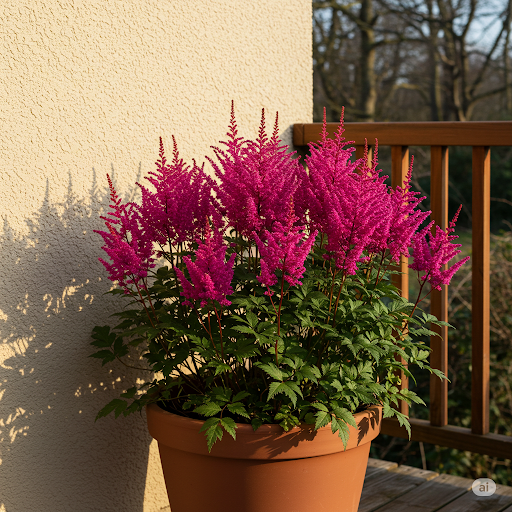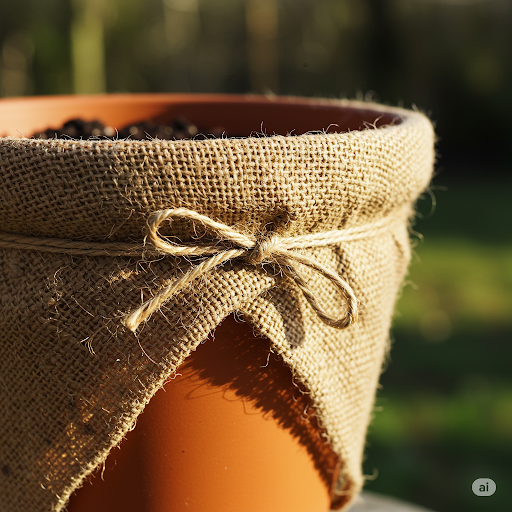How to Overwinter Potted Astilbe: Protecting Your Containers in Winter
Astilbe is a hardy perennial, known for its ability to survive cold winters when planted in the ground within its recommended hardiness zones (typically USDA Zones 3-8, depending on the variety). However, when grown in containers, these plants are significantly more vulnerable to cold damage. The roots, which are well-insulated by the surrounding earth in a garden bed, are exposed to freezing temperatures from all sides in a pot.
Safely overwintering your potted Astilbe requires taking specific steps to protect the root system from prolonged freezing and the damaging freeze-thaw cycles of winter. Here's how to do it.
Why Container Plants Are More Vulnerable in Winter
The key difference between a perennial in the ground and one in a pot during winter is root temperature. Soil in a garden bed moderates temperature fluctuations; it rarely freezes solid to the depth of the plant's roots. In a container, however, the entire soil mass, and thus the root ball, can freeze solid very quickly when air temperatures drop.
Repeated freezing and thawing of the soil can heave the plant out of the pot or damage the roots directly. Extreme cold when the roots are exposed can kill them, leading to a dead plant in the spring. Therefore, winter protection for potted Astilbe is crucial in cold climates.
Preparing Your Potted Astilbe for Winter
Before hard freezes arrive, typically in late fall, take these preparatory steps:
- Stop Fertilizing: Cease fertilization by late summer or early fall. This allows the plant to stop producing tender new growth and begin hardening off for winter dormancy.
- Reduce Watering: As the plant enters dormancy and foliage begins to die back, it requires significantly less water. Allow the surface of the soil to dry out more between waterings, but don't let the pot become bone dry. You still need to water occasionally throughout the winter, especially if kept in a sheltered location.
- Allow Foliage to Die Back: Astilbe foliage will naturally turn brown and wither as cold weather sets in. You can either cut the dead foliage back to the ground in the fall for a tidier look, or leave it standing for some winter interest and cut it back in early spring before new growth appears.
- Clean Up: Remove any fallen leaves or debris from the surface of the pot to reduce the risk of fungal issues.
Overwintering Options for Potted Astilbe
Choose the best method based on your climate severity and available resources:
Move to a Sheltered, Unheated Location: This is often the easiest and most effective method. Move the potted Astilbe to an unheated garage, shed, basement, or a protected covered porch.
- Benefits: Protects the pot from extreme cold, wind, and excessive moisture.
- Care: Check the soil moisture periodically (every few weeks to a month) and water lightly if the top few inches are dry. The goal is to keep the soil from drying out completely, not to keep it wet. Temperatures should remain cool (ideally just above freezing) but consistently so.
Insulate the Pot Outdoors: If you don't have a suitable indoor space, you can provide extra insulation outdoors.
- Method: Group pots together against a warm, protected wall of your house (south-facing is often warmest, but depends on prevailing winds). Wrap the pots (especially the sides) with insulating material such as bubble wrap, burlap, foam insulation board, or even thick layers of old blankets or straw. Secure the material with twine or tape. You can also mulch the surface of the soil in the pot.
- Care: Ensure drainage holes are not blocked and the pot is slightly elevated (e.g., on 'pot feet') if sitting on a solid surface to prevent it from freezing to the ground. Water occasionally during dry winter spells.
Bury the Pot: For colder climates or extra security, you can bury the pot in the ground.
- Method: Find a sheltered spot in the garden. Dig a hole large enough to sink the pot completely into the ground. Place the potted Astilbe in the hole so the rim of the pot is level with the surrounding soil. Backfill around the sides of the pot with soil or mulch. Apply a thick layer of mulch over the top of the pot as well.
- Benefits: Mimics the insulation of in-ground planting, protecting the roots from temperature extremes.
Bringing Indoors into a Heated House: Avoid this! Astilbe needs a period of cold dormancy to rest and set buds for the following season's blooms. Bringing it into a warm, heated house will prevent this crucial dormancy and can lead to weak growth and very poor or no flowering the next year.
Winter Watering
Even in dormancy, roots are alive and need a little moisture. If your potted Astilbe is in a sheltered location where it doesn't receive rain or snow, check the soil moisture every 3-4 weeks. If the top couple of inches are dry, water lightly – just enough to moisten the root ball, not saturate the soil. If left outdoors where it gets precipitation, you likely won't need to water.
Spring Awakening
As winter subsides and temperatures rise in spring, begin to gradually expose your potted Astilbe to outdoor conditions if it was sheltered. Once new growth begins to emerge and the danger of hard freezes has passed, you can move it back to its optimal growing location and resume a regular watering schedule.
By taking these steps to protect the roots from freezing temperatures, you give your potted Astilbe the best chance to survive the winter safely and return with beautiful foliage and blooms in the spring.


Comments
Post a Comment